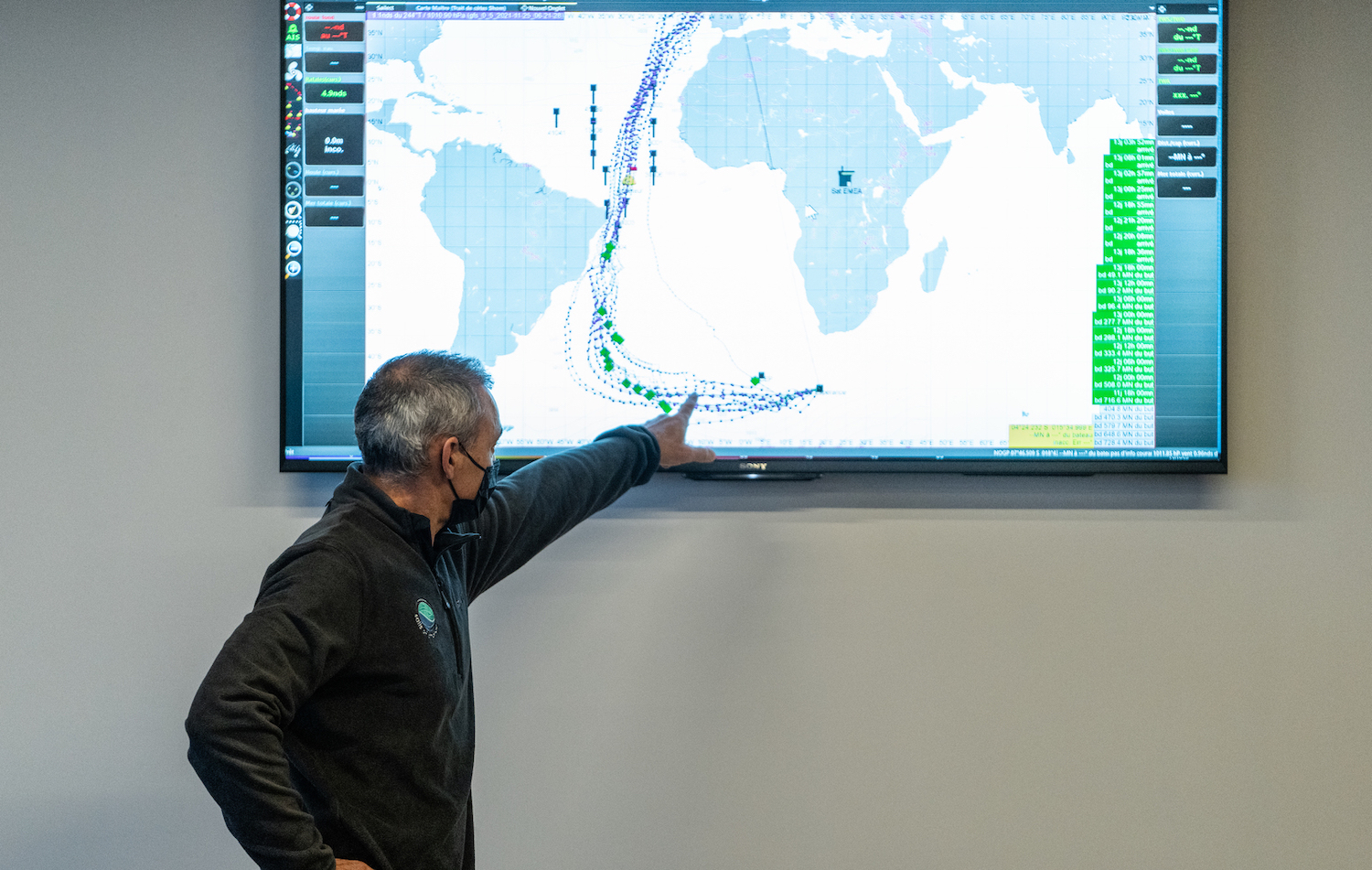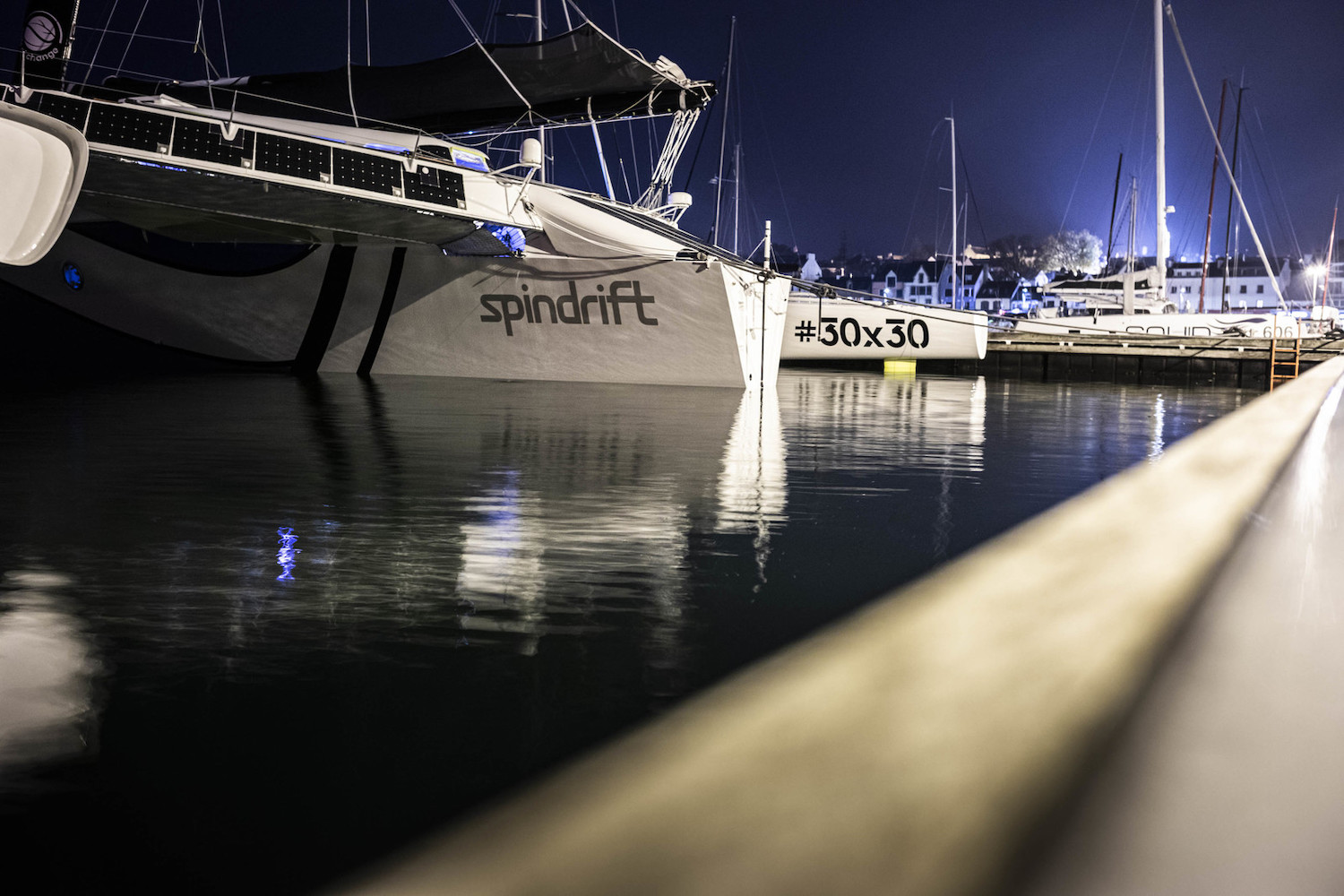


Upon further analysis of the weather files, the Spindrift team has decided to postpone its departure for a fourth attempt at the Jules Verne Trophy. Indeed, the weather conditions in the South Atlantic are shaping up to be less appealing than those analysed on Wednesday evening.
This Thursday morning, the whole crew was ready to leave the dock in La Trinité-Sur-Mer, Brittany, to head out to sea and set sail from the Créac’h lighthouse over the course of the day. The latest position of the Azores High remains favourable for a very quick ‘descent’ to the equator thanks to a powerful N to NE’ly breeze. The problem comes further down the racetrack as the low pressure systems rolling off Brazil are no longer shifting across towards the Kerguelen Islands, leaving room for a series of high pressure ‘bubbles’ across the course, which are synonymous with a lack of stable breeze…

The nine crew supporting Dona Bertarelli and Yann Guichard were all in attendance dockside in La Trinité-Sur-Mer, ready to get going, but they will have to be patient for several more days at least until the weather situation becomes favourable again in both the North and South Atlantic. It’s worth noting that the best WSSRC time (World Sailing Speed Record Council in charge of validating international records) between Ushant and the equator is still held by Spindrift 2 helmed by Yann Guichard and his team in 2019 (4d 20h 7’) while the record for the South Atlantic crossing is still in the hands of Francis Joyon and his crew on IDEC Sport in 2017 (7d 02h 23’)…
“That’s the nature of Jules Verne Trophy records and what makes them very hard to beat! This is especially true when the American and European weather files are in agreement that it would be necessary to go right around the outside of the Saint Helena High, avoid the ice close to South Georgia and finally reach the longitude of Good Hope in thirteen days… Sails of Change could still cross the equator in under four and a half days. However, despite the configuration in the South Atlantic still being favourable yesterday, that is no longer the case today. On top of that, the low pressure systems in the Southern Ocean are on a very low trajectory instead of tracking eastwards, which would indicate a rather laborious passage across the Indian Ocean,” explained Yann Guichard on Thursday morning, after consulting the latest grib fles with his onshore router (Jean-Yves Bernot) and his on-board navigator (Benjamin Schwartz).
In fact, it’s vital to be more than 90% sure you’ll reach the Cape of Good Hope in a sub-twelve-day time to stand a chance of winning the Jules Verne Trophy… That would not be the case if they were to set sail today as planned as there’s precious little chance of them being able to latch onto a last low pressure system rolling off Brazil after a week at sea! Naturally, the team remains on the alert to take on a round the world without using fossil energy (a first in the racing world!) and defend the colours of Sails of Change, which is flying the flag for the ‘30×30’ campaign (a global call to action to protect at least 30% of the ocean and the earth by 2030). See you soon for a fresh attempt over the coming days…
Notifications